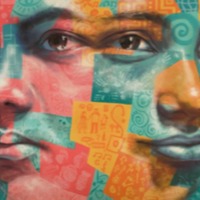
Srey Neth
There are an estimated 261,000 people living in modern slavery in Cambodia (GSI 2018). The country was renowned as a sex tourism destination in the 1990s and this legacy is still prevalent today with women and girls trafficked within the thriving sex industry in Cambodia's major cities. Despite significant attempts to curb CSE, NGOs report the industry has been pushed underground and sex offenders are still able to purchase sex with children through an intermediary rather than more overt selling of sex in brothels. Boys and young men are also vulnerable to sexual exploitation, with many entering the massage industry due to a lack of training and skills. Srey Neth is a young Cambodian victim of human trafficking. In this story she speaks of her experience transitioning from victim to survivor. At 14 she was sold by her mother to a pimp for $300; a week later he sold her virginity for the same price then he forced her to serve 10-20 men per night afterwards. Her refusal was met with beatings or electrocution. Srey Neth was later rescued by police and a non-governmental organization. During her recovery, which unsurprisingly has taken more than five years, she was diagnosed with HIV.
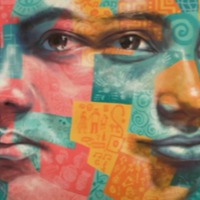
Ganga
The Global Slavery Index 2018 estimates that on any given day there were nearly 8 million people living in modern slavery in India. The GSI 2018 reports an emerging trend in northeast India where organised trafficking syndicates operate along the open and unmanned international borders, duping or coercing young girls seeking employment outside their local area in to forced sexual exploitation. Many women and girls are lured with the promise of a good job but then forced in to sex work, with a 'conditioning' period involving violence, threats, debt bondage and rape. Ganga was sold to a brothel and was forced to provide sexual services to men daily, contracting HIV during her enslavement. She was rescued in 2004 and tells of how she is coping with HIV.
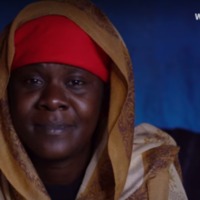
Almasie
There are an estimated 328,000 people living in conditions of slavery in Kenya (GSI 2018). Men, women and children are subjected to exploitation amounting to modern slavery in forced labour and sex trafficking. Children are often subjected to forced labour in domestic service, agriculture, fishing, cattle herding, street vending and begging. They are also victims of commercial sexual exploitation throughout the country, in khat cultivation areas, near gold mines and along the highway and Lake Victoria. Moreover, those residing in Kenya's largest refugee camp Dadaab are often vulnerable. Men and women are often lured by employment agencies offering attractive job opportunities, then find themselves trapped in domestic servitude, massage parlors and brothels or forced manual labour. Almasie was looking for work when she was offered a job as a cleaner in another town. However, upon passing the interview, Almaise was taken to another room and forced to provide sexual services to men. Almaise was there for six months before she was able to escape and found support from HAART.
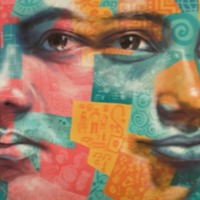
Daksha
The Global Slavery Index 2018 estimates that on any given day there were nearly 8 million people living in modern slavery in India. The GSI 2018 reports an emerging trend in northeast India where organised trafficking syndicates operate along the open and unmanned international borders, duping or coercing young girls seeking employment outside their local area in to forced sexual exploitation. Many women and girls are lured with the promise of a good job but then forced in to sex work, with a 'conditioning' period involving violence, threats, debt bondage and rape. Daksha* wanted to escape her family and was convinced her to go away with a girl she knew. However, this girl sold Daksha in to a brothel.

Bhanu
The Global Slavery Index 2018 estimates that on any given day there were nearly 8 million people living in modern slavery in India. The GSI 2018 reports an emerging trend in northeast India where organised trafficking syndicates operate along the open and unmanned international borders, duping or coercing young girls seeking employment outside their local area in to forced sexual exploitation. Many women and girls are lured with the promise of a good job but then forced in to sex work, with a 'conditioning' period involving violence, threats, debt bondage and rape. Bhanu* was 13 when she was abducted by a man, taken to Mumbai and forced to provide sexual services to customers in a brothel. She was able to escape one day with the help of a customer.
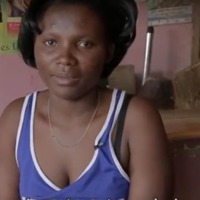
Janet B
Uganda remains a source, transit and destination country for men, women and children subjected to forced labour and sex trafficking. Ugandan children as young as seven are exploited in forced labour in agriculture, fishing, forestry, cattle herding, mining, carpentry, bars, restaurants and domestic service. Girls and boys are also exploited in prostitution, with recruiters targetting girls and women between the ages of 13 and 24 for domestic sex trafficking. 54,000 girls under 18 are sex workers in Uganda. Lured by false promises of education and good jobs. Others are escaping poverty, sexual abuse and child marriage. Janet was 15 when she was forced to marry a man who was 36 years old. Her husband infected Janet with HIV and, ostracised by her family, she ran away to Kampala city. Upon arriving in Kampala, Janet was forced to undertake sex work in order to survive. With the help of Plan International, Janet was able to escape sex work and train to become a hairdresser.